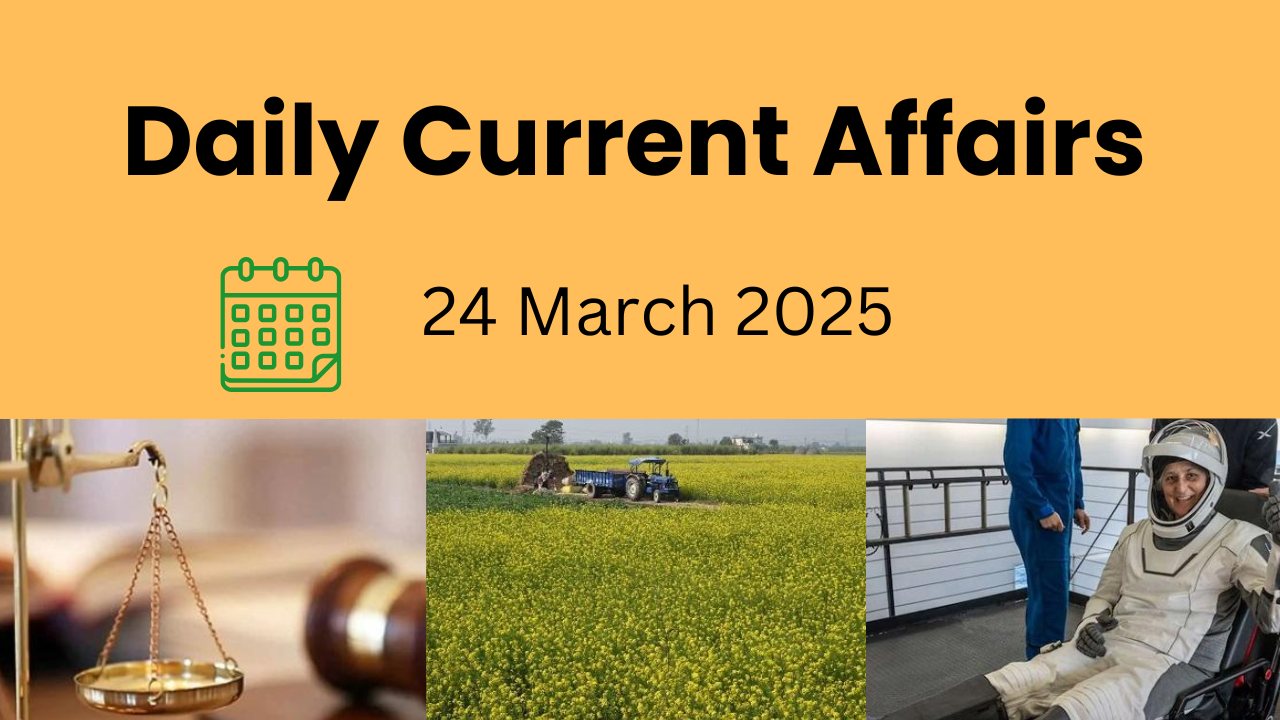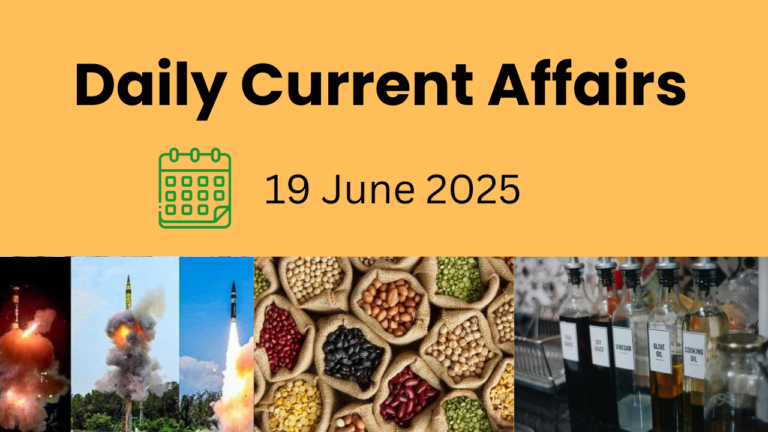1. Fast Track Special Courts (FTSCs): Accelerating Justice for Sexual Crime Survivors
Context: Fast Track Special Courts (FTSCs) play a pivotal role in expediting justice for survivors of sexual crimes in India. With an impressive disposal rate of 96.28%, these courts ensure swift legal proceedings for heinous offenses like rape and crimes under the POCSO Act (Protection of Children from Sexual Offences Act, 2012).
About FTSCs: FTSCs are specialized courts established to tackle the backlog of cases related to serious crimes such as rape and child sexual abuse. Their goal is to ensure timely justice and reduce the pendency of these sensitive cases, which often suffer from prolonged trials.
Establishment: The Department of Justice, under the Ministry of Law & Justice, launched FTSCs in 2019 as part of a Centrally Sponsored Scheme. Funding for the initiative is shared between the central government and state governments:
- 60:40 for most states/UTs with legislatures
- 90:10 for Northeastern and hilly states/UTs
Aiming for a total of 790 FTSCs, including exclusive POCSO (e-POCSO) courts, these courts are designed to ensure efficient and time-bound justice.
Operational Target: Each FTSC is expected to dispose of 41-42 cases per quarter and at least 165 cases annually, contributing significantly to reducing the backlog of cases.
Why FTSCs are Essential?
- Reducing Delayed Justice: The Supreme Court of India in 2019 directed the establishment of FTSCs to ensure speedy disposal of POCSO cases. The Criminal Procedure Code (CrPC) and POCSO Act mandate strict timelines for investigation and trial. Prolonged trials weaken the deterrent effect of the law and fail to serve justice to victims.
- Enhancing Public Confidence: By speeding up legal processes, FTSCs send a clear message that society will not tolerate sexual crimes. This helps in strengthening the rule of law and builds public trust in the judicial system.
Key Recommendations for Strengthening FTSCs:
The Indian Institute of Public Administration (IIPA) has recommended several measures to enhance the effectiveness of FTSCs:
- Continuation of the FTSC Scheme: FTSCs should continue as a vital mechanism for ensuring streamlined and expedited trials in cases of sexual violence.
- Strengthening Judicial Infrastructure:
- Appoint specialized judges with experience in handling POCSO cases.
- Sensitize judicial officers and staff on the nuances of sexual violence cases to ensure compassionate handling.
- Technological Upgradation:
- Equip courtrooms with audio-video recording systems, enabling efficient e-filing of cases and digitization of court records.
- Modernize court procedures with the help of technology to expedite trials and reduce manual errors.
- Strengthening Forensic Support:
- Increase the number of forensic labs to speed up the collection and analysis of evidence.
- Train forensic personnel to ensure timely submission of DNA reports, facilitating quicker trials and ensuring justice.
- Establishment of Vulnerable Witness Deposition Centres (VWDCs):
- Set up VWDCs in every district to facilitate child-friendly and sensitive recording of testimonies from survivors, especially minors.
- Appointment of Child Psychologists:
- Appoint a child psychologist at every FTSC to assist victims throughout the pre-trial and trial processes, providing the emotional and psychological support they need.
The Road Ahead: Empowering Justice: The Fast Track Special Courts have proven to be a crucial step in delivering justice without delay for survivors of sexual crimes. However, continuous improvement in judicial infrastructure, technological advancements, and forensic support is essential to ensure that these courts continue to be a powerful tool in the fight against sexual violence in India. Through these measures, FTSCs can become an even more effective and compassionate part of the judicial system, offering timely justice for those who need it most.
2. Sub-Categorisation of Scheduled Castes (SCs) in Andhra Pradesh
Context: The Andhra Pradesh Cabinet has approved the one-member commission’s recommendations on sub-categorisation of Scheduled Castes (SCs) to ensure a more equitable distribution of reservation benefits.
This demand has been ongoing for over 30 years, with previous efforts including the Justice Ramachandra Rao Commission (1996).
What is Sub-Categorisation?
Sub-categorisation refers to dividing the SC category into smaller sub-castes to ensure a fair distribution of benefits, particularly in areas such as:
- Education
- Employment
- Affirmative Action
Historical Context & Supreme Court Rulings:
1. Punjab’s 1975 Reservation Policy:
- Punjab Government issued a notification giving first preference in SC reservations to the Balmiki and Mazhabi Sikh communities, considered the most backward SC groups in the state.
- This move was challenged after the Supreme Court’s ruling in E.V. Chinnaiah (2004), which struck down a similar Andhra Pradesh law.
2. E.V. Chinnaiah Case (2004) – SC’s Earlier Stance:
- The Supreme Court ruled that once included in the Presidential list (Article 341/342), SCs and STs form a single, indivisible class.
- States were not allowed to sub-classify or create quotas within the SC/ST reservations.
3. Shift in 2020 – Recognizing Inequality within SCs:
- The Supreme Court reconsidered its 2004 stance, acknowledging that not all SCs face the same level of disadvantage.
- The 2018 Jarnail Singh v. Lachhmi Narain Gupta ruling introduced the “creamy layer” concept for SCs, reinforcing the idea of inequality within the category.
4. Landmark 2024 Supreme Court Ruling:
- The Supreme Court upheld the concept of sub-classification within SCs and STs, allowing affirmative action benefits to be extended more equitably.
- Key Clarification:
- Article 341 does not prohibit sub-classification; it only restricts the President’s power to add or remove SC groups from the list.
- States can now create sub-quotas within SCs, provided strict guidelines are followed.
Arguments in Favour of Sub-Categorisation:
Addresses Underrepresentation:
- Some SC/ST groups remain underrepresented in education and employment despite existing reservations.
SCs are Not a Homogeneous Group:
- Some sub-castes within SCs are more disadvantaged than others, making sub-classification necessary for true social justice.
Substantive Equality Under Article 14:
- Article 14 (Right to Equality) supports differentiation to achieve real equality among disadvantaged groups.
May Enable a Caste Census:
- A caste census could provide accurate data on representation, helping to redistribute reservation benefits fairly.
Arguments Against Sub-Categorisation:
Risk of Political Manipulation:
- Some fear that political leaders may exploit sub-classification for electoral gains, rather than ensuring true social justice.
Violates the Constitution’s Intent:
- Critics argue that altering the President’s SC list (Article 341) through state-level sub-classification is unconstitutional, as only Parliament can modify this list.
Conclusion & Way Forward:
Legal Backing with Caution:
- States now have judicial support for sub-classification but must ensure data-backed and fair implementation.
- Judicial oversight is needed to prevent misuse of the policy.
Data-Driven Sub-Classification:
- Sub-classification should be based on “quantifiable and demonstrable data” rather than political motives.
Excluding the Creamy Layer:
- Policies should exclude the “creamy layer” (economically advanced SC/ST members) from reservation benefits to prioritize the most disadvantaged groups.
By following these measures, sub-categorisation can become a powerful tool for ensuring genuine social justice while maintaining constitutional integrity.
3. Okjökull: The First Glacier Lost to Climate Change
Context: Iceland’s Okjökull Glacier was officially declared dead in 2014, marking it as the first glacier lost due to human-induced climate change. Satellite images taken over three decades show its complete disappearance.
A Memorial for Ice:
In 2023, Iceland established the world’s first iceberg graveyard, commemorating 15 major glaciers listed on the Global Glacier Casualty List—either already lost or critically endangered. Among them is Anderson Glacier in Washington, the first U.S. glacier declared dead in 2015.
Understanding Earth’s Cryosphere:
The cryosphere refers to all the frozen components of Earth, including:
- Glaciers
- Ice sheets
- Sea ice
- Permafrost
- Snow cover
The term comes from the Greek word “kryos,” meaning frost or ice cold.
The Two Remaining Ice Sheets:
Only two massive ice sheets remain on Earth today:
- Greenland Ice Sheet
- Antarctic Ice Sheet
Both contain more than 70% of the planet’s freshwater ice, with ice over 2 kilometers thick.
Cryosphere’s Role in Climate and Life:
- Regulating Global Temperature: Reflects sunlight (albedo effect), keeping the planet cool.
- Maintaining Sea Levels: Stores freshwater and prevents rapid sea-level rise.
- Supporting Ecosystems: Essential for marine and land species.
- Marking Climate Change: Sensitive to temperature changes, acting as an early warning system.
Threats to the Cryosphere:
- Global Warming: Rising temperatures accelerate ice melt.
- Rising Sea Levels: Melting glaciers contribute to flooding in coastal regions.
- Loss of Habitats: Ice-dependent species face extinction.
- Permafrost Thawing: Releases carbon dioxide and methane, intensifying global warming.
- Disrupted Snowfall Patterns: Affects freshwater availability and ecosystems.
Global Efforts to Protect the Cryosphere:
- Paris Agreement (2015): Aims to limit global warming to 1.5°C.
- International Cryosphere Climate Initiative (ICCI): Works on policies to protect frozen regions.
- IPCC Reports: Highlight the need for urgent action.
- National Mission for Sustaining the Himalayan Ecosystem (NMSHE): India’s initiative under NAPCC to protect the Himalayas.
- CryoNet (WMO): Monitors changes in the cryosphere globally.
- Sustainable Development Goals (SDGs): Goal 13 (Climate Action) and Goal 15 (Life on Land) focus on mitigating climate impacts.
- Arctic Council: Promotes sustainable policies in the Arctic region.
- Global Ice Monitoring Initiatives: Programs like Global Cryosphere Watch (GCW) and CryoSat Mission track ice mass loss.
A Call to Action:
The cryosphere is essential for maintaining Earth’s climate, biodiversity, and water resources. Preserving it is crucial for future generations and the health of our planet.
With 2025 declared the International Year of Glaciers’ Preservation, the time to act is NOW.
4. Progress on GM Food Crops: Insights from DBT Official
Context: The Department of Biotechnology (DBT) has recently acknowledged progress in Genetically Modified (GM) food crops, signaling advancements in research and development.
What Are Genetically Modified (GM) Food Crops?
GM crops are plants whose genetic material has been artificially modified using biotechnology to introduce desirable traits such as:
- Pest Resistance (e.g., Bt cotton, Bt brinjal)
- Herbicide Tolerance (e.g., GM soybean)
- Drought & Salinity Resistance
- Nutritional Enhancement (e.g., Golden Rice enriched with Vitamin A)
GM Crops in India: Current Status:
Currently, Bt Cotton is the only commercially cultivated GM crop in India since its introduction in 2002. Other developments include:
- Bt Brinjal: Approved in 2010 but later banned due to public concerns.
- GM Mustard (DMH-11): Approved by GEAC in 2022 but still faces legal and environmental challenges.
- Golden Rice: Under research but not yet approved for commercial use.
India’s Bio-Economy and GM Crop Influence:
Growth of the Bio-Economy:
- India’s Bio-economy has grown 16-fold, from $10 billion in 2014 to $165.7 billion in 2024.
- It now contributes 4.25% of India’s GDP, with a 17.9% CAGR over the past four years.
Key Sectors in Bio-Economy:
- Bio-industrial Segment (enzymes, biofuels, bioplastics) – 47%
- Biopharma (medicines, diagnostics) – 35%
- Bio IT/Research Services (contract research, clinical trials) – 9%
- Bio-agriculture – 8.1%
Statewise Contributions:
- Maharashtra: 21% ($35 billion)
- Karnataka: 19% ($32 billion)
- Telangana: 12% ($19 billion)
Startup Ecosystem:
- India had 10,075 biotech startups in 2024.
- Expected to grow to 22,500 by 2030, creating 35 million jobs.
Advantages of GM Crops:
- Higher Yields – Enhances food security and farmer income.
- Reduced Pesticide Use – Crops like Bt Cotton lower pesticide dependence.
- Climate Resilience – GM crops can withstand droughts and soil salinity.
- Nutritional Benefits – Golden Rice helps combat Vitamin A deficiency.
Challenges & Concerns:
- Environmental Impact – Possible effects on biodiversity, soil health, and pollinators.
- Health Risks – Long-term human health impacts remain under debate.
- Farmer Dependency – GM seeds are often patented by corporations, increasing dependency.
- Ethical & Religious Concerns – Genetic modification faces opposition from cultural and religious groups.
Regulatory Framework for GM Crops in India:
- Genetic Engineering Appraisal Committee (GEAC) – Primary body regulating GM crops.
- Food Safety and Standards Authority of India (FSSAI) – Approves GM food imports.
- Environment Protection Act, 1986 – Governs the use and safety of GM organisms.
- BioE3 Policy – Aims to enhance biotechnology use in food crops, pharmaceuticals, and agriculture.
Global Perspective on GM Crops:
- Countries like the USA, Brazil, and China have widely adopted GM crops.
- The EU and India remain cautious due to environmental and ethical concerns.
- The debate continues, with scientists advocating the potential benefits, while activists raise safety concerns.
The Road Ahead:
With advancements in biotechnology and regulatory frameworks, India’s approach to GM food crops will play a crucial role in sustainable agriculture, food security, and economic growth. However, addressing public concerns and ensuring long-term safety remains vital for future adoption.
5. Mongolia: The Land of Eternal Blue Sky
Context: India and Mongolia have reaffirmed their commitment to deepening their strategic partnership, fostering cooperation in various sectors, including trade, defense, and culture.
Political Overview:
- Landlocked Nation: Mongolia is a landlocked country situated in north-central Asia.
- Bordering Nations: It shares its borders with Russia to the north and China to the south.
- Capital: Ulaanbaatar, the coldest capital city in the world, is Mongolia’s political and economic hub.
Geographical Highlights:
- Dominant Landforms: Mongolia is predominantly a highland plateau, with approximately 80% of its terrain covered in vast steppes (grasslands).
- Desert Landscape: The Gobi Desert, located in the southern part, is one of the world’s largest cold deserts, home to unique wildlife such as the Bactrian camel and the elusive snow leopard.
- Mountain Ranges: The country boasts several major mountain chains, including:
- Altai Mountains – Known for their rugged terrain and diverse wildlife.
- Khangai Mountains – A forested mountain range offering a contrast to the arid steppes.
- Khentii Mountains – Historically significant as the birthplace of Genghis Khan.
Water Bodies and Natural Heritage:
- Longest River: The Orkhon River, which flows through the famous Orkhon Valley, a UNESCO World Heritage Site, known for its rich historical and cultural significance.
- Lakes and Wetlands: Mongolia is home to stunning lakes like Lake Khövsgöl, often called the “Blue Pearl of Mongolia,” which holds nearly 2% of the world’s fresh water.
Did You Know?
- Mongolia is known as the “Land of the Eternal Blue Sky” because it experiences over 250 sunny days a year!
- The Naadam Festival, Mongolia’s biggest traditional event, showcases “The Three Manly Games” – wrestling, horse racing, and archery.
- Mongolia has one of the lowest population densities in the world, with vast open landscapes and a deeply rooted nomadic culture.
This remarkable nation, with its unique geography and rich cultural heritage, continues to be a fascinating destination on the global map.
6. Astronauts’ Recovery After Space Missions: Health, Rehabilitation & Challenges
Context: A SpaceX capsule carrying astronauts Sunita Williams, Barry Wilmore, Aleksandr Gorbunov, and Nick Hague safely splashed down in the Gulf of Mexico following their mission aboard the International Space Station (ISS).
- Williams and Wilmore completed a nine-month mission on the ISS, having arrived in June last year via Boeing’s Starliner capsule.
- NASA provides a structured recovery program for Hague, Williams, and Wilmore, while Roscosmos manages Gorbunov’s rehabilitation.
Impact of Spaceflight on the Human Body:
Extended space missions significantly impact astronauts’ bodies due to prolonged exposure to microgravity.
Key Physical Challenges:
- Fluid shifts toward the brain, affecting vision and balance
- Muscle weakening due to lack of gravitational resistance
- Reduced bone density, increasing the risk of fractures
Countermeasures in Space:
To minimize these effects, astronauts follow strict exercise regimens and nutrition plans while aboard the ISS.
Coping with Psychological and Physiological Stress:
- Space agencies implement stress management programs to help astronauts cope with isolation, workload, and confinement.
- Mental well-being is as important as physical health for long-duration missions.
Challenges in Spaceflight Research:
- Due to the small number of astronauts, data on the long-term effects of space travel is still limited.
- Gender-based physiological differences in response to spaceflight are being studied, though no conclusive evidence has been found.
How Astronauts Are Monitored in Space:
In 2024, NASA introduced updated medical protocols to improve astronaut health monitoring before, during, and after space missions.
Monitoring During Long Missions:
For missions exceeding 30 days, astronauts must:
- Conduct self-evaluations at 2 weeks, 3 months, 6 months, and 9 months after launch
- Submit medical reports to the crew medical officer
- Participate in daily private health conferences for the first week, followed by weekly check-ins.
Medical Tests in Space:
- Hearing & Eye Exams: Every three months
- Body Mass Check: Monthly
- Blood & Urine Tests: At six months or as needed
- Blood Circulation Monitoring: Screening for deep-vein thrombosis at one and two months post-launch
- Radiation & Strength Tests: Conducted regularly throughout the mission
Post-Flight Rehabilitation Process:
After splashing down, astronauts begin a structured rehabilitation program to help them readjust to Earth’s gravity.
Customized Recovery Plans:
- NASA tailors the reconditioning program to each astronaut.
- Most astronauts regain pre-flight fitness within 45 days, but some require extended rehabilitation.
Medical Examinations Upon Return:
Immediate Tests (Day of Return):
- Physical Exam & Neurological Assessment
- ECG (Heart Monitoring), Eye Tests, Skin Checks
- Blood & Urine Analysis
- Orthostatic Tolerance Tests (measuring ability to stand without dizziness)
Follow-up Examinations:
- Conducted at 3 days, 1-2 weeks, and 2 months post-return
- Additional tests if medically required
Mental Health Monitoring:
- Psychologists evaluate astronauts to ensure a smooth mental transition back to normal life.
Importance of Physical Rehabilitation:
Physical therapy is essential to help astronauts safely regain strength and prevent injuries.
Early Recovery & Assessments:
- Day of Return: Crew surgeons assess the need for massage therapy.
- First Week: 2-hour daily reconditioning with elliptical, rowing, cycling, gait training, and stretching exercises.
Progressive Rehabilitation:
- Second Week: Introduction of jogging and water-based exercises to improve mobility.
- Daily Monitoring: Physiotherapists adjust exercises based on progress tracking.
Key Focus Areas:
NASA’s program focuses on restoring:
- Aerobic capacity & muscle strength
- Bone density & balance
- Stamina & coordination
- Neurovestibular function (balance and spatial awareness)
Completion of Rehabilitation:
Once astronauts fully recover, they are cleared to resume normal duties.
This structured recovery process ensures astronauts return to peak physical and mental health after their demanding space missions.




